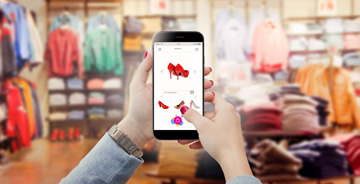
(EastBanc Technologies) - The term "digital transformation" is used a lot in business, and while the concept has existed for years, it's discussed more than ever today as a result of the COVID-19 pandemic. Digital transformation describes a company's adoption of software so it can adapt quickly to business and market changes and stay competitive in a rapidly-evolving landscape. Local brick-and-mortar stores opening e-commerce websites to sell products and services online, restaurants introducing online order capabilities for takeout and local attractions such as zoos and museums adding online reservation tools and virtual visit options to their websites are all examples of digital transformation in action.
Most market sectors have been touched by digital transformation, and the financial services industry is no different, with traditional providers, such as retail banks and credit unions, evolving to allow customers to access their accounts and pay for services rendered quickly and securely via the services they use in their day-to-day, from rideshare apps to digital wallets. The pandemic forced financial services companies to move quickly and, as a result, opened the door to new, improved digital experiences that consumers expect are here to stay.
As consumers prepare for this year's "new normal" holiday shopping season, read on to learn about three of the top trends today's innovative financial services companies are supporting during the holidays -- and beyond -- to stay competitive while helping consumers easily manage their finances, stay safe and make purchases securely.
Contactless Payments
The adoption of contactless payment options skyrocketed during the pandemic as consumers looked to socially distance and limit close contact with others in stores. In fact, 70 percent of merchants in the U.S. say their customers are requesting tap-and-go or mobile app payment options as a result of the pandemic (American Express, 2020). With contactless payments, consumers avoid using physical money or inserting a credit card in a kiosk by instead quickly tapping a physical card, wearable or smartphone with radio frequency identification (RFID) or near- field communication (NFC) technologies to a payment kiosk. This fast and convenient payment option is not going away either; nearly half of global consumers (46 percent) have changed their usual credit card for one that supports contactless payments, and 74 percent say they will continue to use contactless payment options post-pandemic (Mastercard, 2020).
Embedded Payments
Taking contactless payments one step further, consumers can expect that the process of using their bank accounts while on-the-go to purchase their goods and services will get even easier and streamlined as more brands offer mobile app experiences and embedded payment options within them. Much like taking an Uber or buying groceries through Instacart, embedded payments are conducted automatically after a service is complete and without having to swipe a credit card or even tap a smartphone to a kiosk. More broadly, embedded finance, or embedded banking, is an emerging opportunity for financial services companies to seize as the segment grows to an expected $230 billion in revenue by 2025, a 10x increase from 2020 (Lightyear Capital, 2021).
Seamless Omnichannel Purchases
More than half of U.S. consumers (58 percent) are more comfortable shopping in stores today than they were a year ago because vaccines are now widely available (NPD Group, 2021). Coupled with today's online buying habits, hybrid purchasing activity adds complexity for financial services providers. For example, consumers may make a purchase at a physical pop-up shop by scanning a QR code at the register. They may later want to order more items from that pop-up shop and do so instead via the store's e-commerce site because they are no longer out shopping. Payment providers and banks must ensure that they do not add any friction at the point of purchase, from knowing when to flag a potentially fraudulent transaction to processing payments immediately.
None of these capabilities are possible without sophisticated technology systems operating in the background that connect financial services companies to retailers and payment infrastructure providers. Agile software development processes are a must for financial services companies to ensure they can introduce new customer-facing features with control and the ability to test and improve them iteratively without disrupting the experience. Digital products and services also require a cloud-based infrastructure to provide flexible support using application programming interfaces (APIs), scale via container orchestration if desired, and added security. With these layers in place, financial services companies will be able to organize and analyze data illustrating usage, issues and opportunities, as well as automate personalized experiences and features using artificial intelligence.
The pace of innovation as a result of digital transformation is not going to slow down after this year's holiday buying season or anytime soon because consumers are now accustomed to more convenient and personalized experiences. While this is great news for consumers, the pressure has never been higher for financial services companies to evolve legacy systems, adapt their business models and align themselves with partners to seamlessly support customers wherever they are managing their finances and spending money, in-person and digitally.














